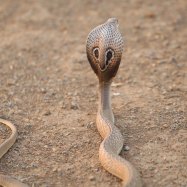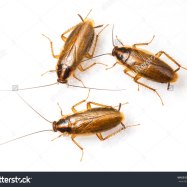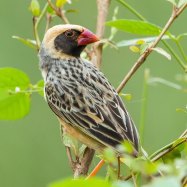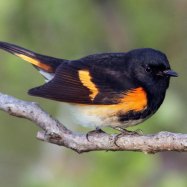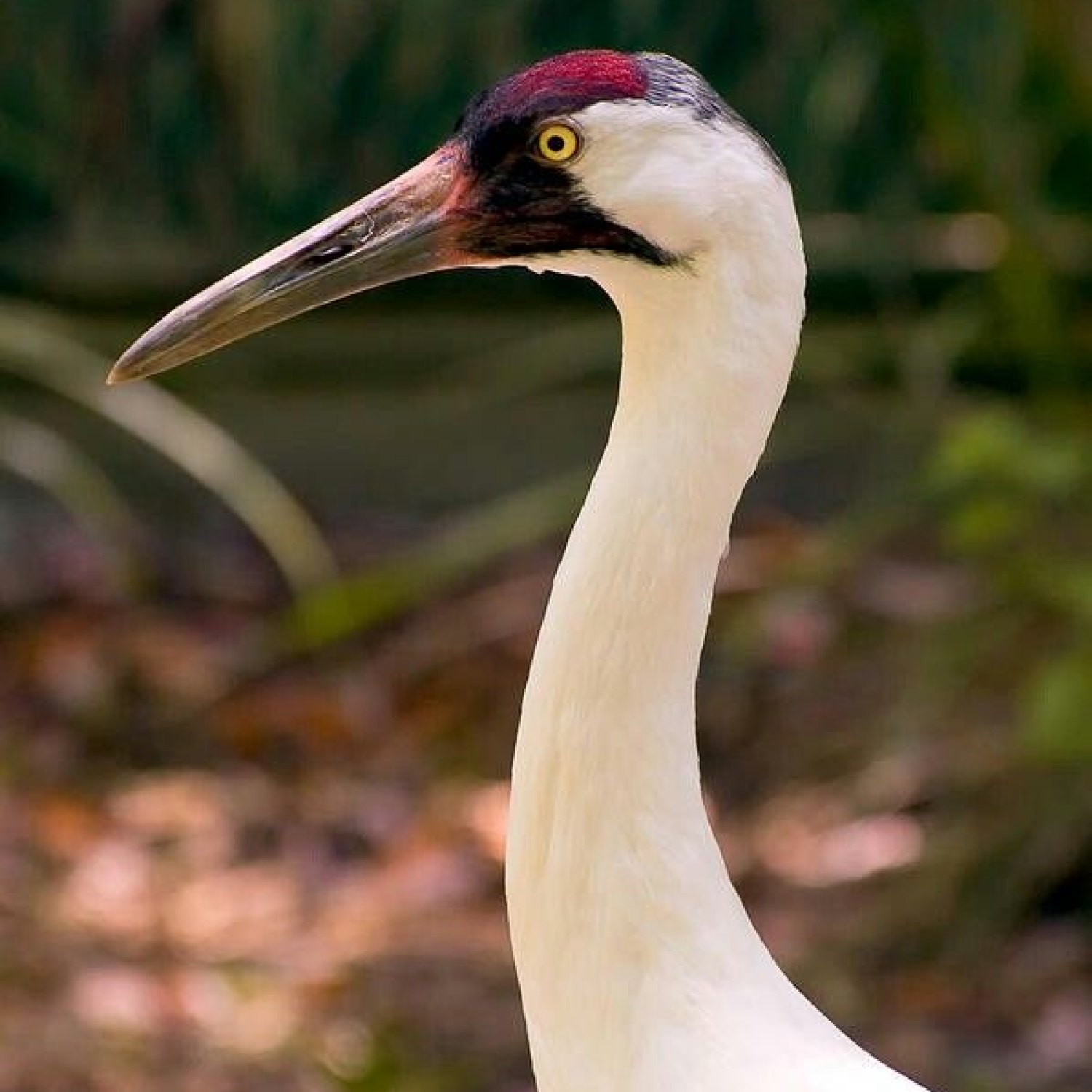
Whooping Crane
1.3-1.6 meters (4.3-5.2 feet)
The magnificent Whooping Crane, found in Texas and Wood Buffalo National Park, is a sight to behold. Standing at 1.3-1.6 meters with a tall, slender body and distinctive feathers, it's the tallest bird in North America. A part of the Gruidae family, its long legs and graceful neck make it a stunning addition to any birdwatcher's list.
Animal Details Summary:
Common Name: Whooping Crane
Kingdom: Animalia
Habitat: Marshes, wetlands, and coastal habitats
The Majestic Whooping Crane: A Symbol of Conservation and Resilience
The whooping crane, scientifically known as Grus americana, is an iconic bird species native to North America. With its striking white plumage, black primary feathers, and red crown, the whooping crane is a sight to behold. Standing at 1.3-1 Whooping Crane.6 meters (4.3-5.2 feet) tall with a wingspan of 2.3-2.4 meters (7.5-8 feet), it is also one of the tallest birds in the world.But this magnificent bird's beauty goes beyond its physical appearance. The whooping crane has a rich history and plays a crucial role in the ecosystem's balance and conservation efforts. In this article, we will delve into the captivating world of the whooping crane and discover what makes it such a fascinating and remarkable species Western Kingbird.
An Endangered Species
The whooping crane is classified as an endangered species by the International Union for Conservation of Nature (IUCN). At one point, their population drastically declined, with only 16 individuals left in the 1940s. This decline was primarily due to human interference, such as hunting, and habitat destruction.However, thanks to conservation efforts and protection laws, the whooping crane population has slowly increased over the years. As of 2020, there are around 800 individuals, with more than 500 of them living in the wild.
Habitat and Geographical Distribution
The whooping crane is mainly found in marshes, wetlands, and coastal areas, such as saltwater estuaries, shallow ponds, and prairies. They have a wide geographical distribution, with their breeding grounds in the United States and their wintering grounds in Canada.More specifically, whooping cranes breed in Wood Buffalo National Park in Canada and migrate to Texas's grasslands for the winter. This migration can cover a distance of over 4,000 kilometers (2,500 miles), making it one of the longest migrations of any North American bird.
The whooping cranes' geographical distribution and migration patterns are critical to their survival as they rely on specific habitats to breed, feed, and rest.
Feeding Method
The whooping crane is carnivorous, feeding primarily on fish, crustaceans, small mammals, and insects. They use their long, pointed beaks to catch their prey, and their slender body shape allows them to wade through shallow water with ease.During the winter months, when their breeding grounds freeze over, the whooping cranes will also forage in harvested croplands. This ability to switch their feeding habits makes them adaptable and aids in their survival in changing environments.
Body Shape and Coloration
The whooping crane's unique body shape and coloration are essential to their survival. Their tall, slender body allows them to wade through shallow water to catch their prey, while their long necks help them reach for food in deeper waters.Their white plumage serves as camouflage in their breeding grounds, blending in with the snow and making it easier for them to sneak up on their prey. The black primary feathers and red crown add a touch of elegance to their appearance and make them stand out in the wild.
An Important Role in Ecosystems
Aside from their physical beauty, whooping cranes also play a crucial role in the ecosystems they inhabit. Being top predators, they help control the populations of their prey, maintaining a balance in the ecosystem. They also aid in seed dispersal, which is essential for plant growth and diversity.Moreover, whooping cranes are an indicator species, meaning their presence or absence can tell a lot about the health of an ecosystem. If their populations decline, it is a sign that something is wrong with the ecosystem, and conservation efforts are needed.
Conservation Efforts
The whooping crane's decline to only 16 individuals in the 1940s prompted immediate conservation efforts. These efforts included captive breeding programs, habitat restoration, and protection laws. Today, we can see the results of these efforts, with the whooping crane population slowly but surely increasing.One of the most notable conservation success stories was the reintroduction of whooping cranes to Louisiana's wetlands. The species had been absent from the state for almost 60 years, but thanks to captive breeding and release programs, there are now a few dozen whooping cranes living in the wild in Louisiana.
However, despite these efforts, the whooping crane's future remains uncertain. Their population is still relatively small, making them susceptible to diseases, natural disasters, and human interference. Continued conservation efforts are vital to ensure their survival and prevent them from going extinct.
A Symbol of Resilience
The whooping crane's survival is a testament to their sheer resilience as a species. They have overcome near extinction, habitat loss, and human interference. Their ability to adapt to changing environments and their tenacity to thrive despite challenges make them a source of inspiration and hope.Their story also serves as a reminder of the importance of conservation efforts and the impact we have on the natural world. With the help of humans, the whooping cranes are making a comeback, and we must continue protecting them and their habitats.
In Conclusion
The whooping crane is more than just a beautiful bird. It is a symbol of resilience, a vital player in the ecosystem, and a reminder of the importance of conservation efforts. With its striking appearance, fascinating behaviors, and crucial role in the environment, the whooping crane captures the hearts and minds of all who encounter it. Let us continue to celebrate and protect this magnificent bird species, ensuring its survival for generations to come.

Whooping Crane
Animal Details Whooping Crane - Scientific Name: Grus americana
- Category: Animals W
- Scientific Name: Grus americana
- Common Name: Whooping Crane
- Kingdom: Animalia
- Phylum: Chordata
- Class: Aves
- Order: Gruiformes
- Family: Gruidae
- Habitat: Marshes, wetlands, and coastal habitats
- Feeding Method: Carnivorous
- Geographical Distribution: North America
- Country of Origin: United States and Canada
- Location: Texas, United States and Wood Buffalo National Park, Canada
- Animal Coloration: White with black primary feathers and red crown
- Body Shape: Tall and slender with long legs and neck
- Length: 1.3-1.6 meters (4.3-5.2 feet)
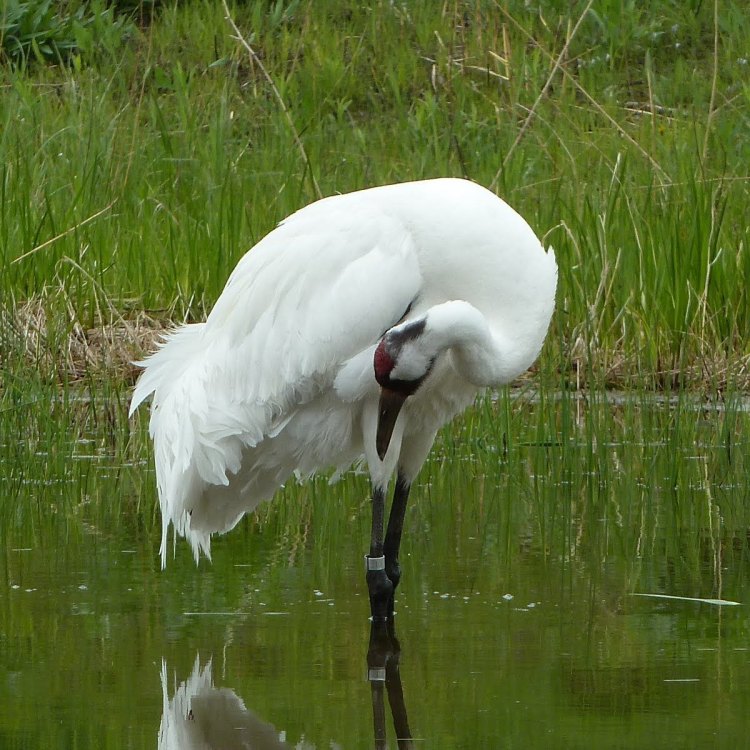
Whooping Crane
- Adult Size: Large
- Average Lifespan: 22-24 years
- Reproduction: Monogamous
- Reproductive Behavior: Mating occurs in courtship displays, nest building, and performing dances
- Sound or Call: Loud and trumpet-like calls
- Migration Pattern: Long-distance migratory
- Social Groups: Pairs or small family groups
- Behavior: Non-aggressive
- Threats: Habitat loss, hunting, collisions with power lines
- Conservation Status: Endangered
- Impact on Ecosystem: Indicator species for the health of wetland ecosystems
- Human Use: Tourism, research, and education
- Distinctive Features: Tall stature and white plumage
- Interesting Facts: They are the tallest birds in North America and have a specialized vocal organ that allows them to produce their distinctive whooping call.
- Predator: Human, gray wolves, and black bears
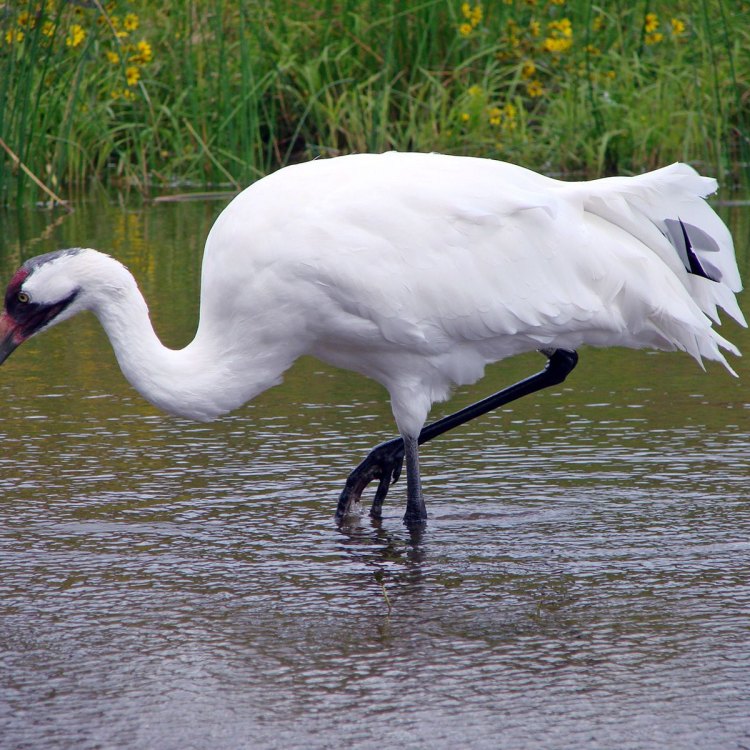
Grus americana
The Magnificent and Endangered Whooping Crane: A Symbol of Resilience and Hope
As you scan the wetlands of North America, you may come across a majestic bird with a stark white plumage and a loud, trumpet-like call – the whooping crane. Standing at over five feet tall, the whooping crane is an awe-inspiring sight. Yet, despite its large size, this bird is still under threat, with its population slowly dwindling. So, what makes the whooping crane such a remarkable and endangered species? Let's dive deeper into the unique features, behavior, and conservation efforts surrounding this iconic bird PeaceOfAnimals.Com.Distinctive Features
One of the first things that come to mind when thinking of the whooping crane is its sheer size. As the tallest bird in North America, standing at an average of five feet and weighing up to 16 pounds, the whooping crane is a formidable presence. But its size is not its only unique feature.
The whooping crane has a striking white plumage, with black primary feathers on its wings and a red patch on its crown. Its long legs and neck add to its tall stature, making it easily distinguishable from other birds. However, what truly sets the whooping crane apart is its voice. With a specialized vocal organ, this bird can produce loud, trumpet-like calls, giving it its name "whooping" crane.
Reproduction
Like many other cranes, the whooping crane is a monogamous species, forming lifelong pair bonds with a single mate. Mating typically occurs during courtship displays, where the male and female perform intricate dances, high jumps, and vocalizations Woodlouse. These displays can also involve nest building, with the male offering materials to the female, who then builds the nest. Once the pair has mated, they work together to raise their young.
Social Groups and Behavior
Whooping cranes are typically solitary birds, found either in pairs or small family groups. They are non-aggressive and often peaceful, preferring to avoid conflict and use their dance and call displays to communicate with other birds.
Their behavior also includes a unique social hierarchy within their groups. The older, more experienced birds lead the way during migration, while the younger and weaker ones follow. This hierarchy ensures their safety during their long journeys.
Migratory Patterns
One of the most fascinating behaviors of the whooping crane is their long-distance migration. These birds travel over 2,500 miles twice a year, from their breeding grounds in Canada and the Northern United States to their wintering grounds in the warm marshes of Texas and Florida.
The whooping cranes' migratory journey is a testament to their resilience and determination, facing numerous challenges along the way. Despite their large size and long journeys, they can fly at speeds of up to 60 miles per hour and can travel up to 400 miles in one day.
Threats to Survival
While the whooping crane's long journeys and tall stature may make them seem invincible, they are, in fact, highly endangered. There are currently only around 800 whooping cranes in the world, with the majority living in the wild.
The biggest threat to the survival of these birds is habitat loss. The whooping crane relies heavily on wetland ecosystems for breeding, nesting, and foraging. Unfortunately, these vital habitats are disappearing due to human activities such as agriculture, industrial development, and urbanization.
Another significant threat to the whooping crane's survival is hunting and collisions with power lines. Despite being a protected species, whooping cranes still face illegal hunting, mainly during their migration when they are concentrated in small areas. Collisions with power lines also pose a significant threat, with an estimated 20% of the population being killed by collisions every year.
Conservation Efforts
With their dwindling population and numerous threats, the whooping crane's future may seem bleak. However, thanks to the efforts of various organizations, there is still hope for this magnificent bird.
The primary conservation effort for the whooping crane is through habitat protection and restoration. Numerous organizations work to preserve and restore critical wetland ecosystems, essential for the whooping crane's survival. These efforts include controlling invasive species, managing water levels, and restoring natural vegetation.
The whooping crane's conservation also involves collaboration with local communities and educating the public about the importance of protecting these birds and their habitats. This includes promoting responsible hunting and the installation of power lines that are less harmful to birds.
Impact on Ecosystem
The whooping crane's critical role in the ecosystem cannot be overstated. These birds are considered an indicator species for the health of wetland ecosystems. Their presence indicates that the wetlands are healthy, and their absence can be a warning sign of environmental issues.
As a long-distance migratory bird, the whooping crane also plays a vital role in seed dispersal and nutrient distribution in the areas they visit. Their foraging behavior also helps maintain the balance of aquatic and terrestrial food webs in wetland ecosystems.
Human Use and Interesting Facts
Apart from conservation efforts, the whooping crane also has significant value to humans. They are a popular tourist attraction, with many birdwatchers and nature enthusiasts flocking to see these birds during their migration. The economic value of whooping crane tourism is estimated to be around $26 million annually.
Furthermore, the whooping crane is also used for research and education purposes. Scientists study their migratory patterns, habitat preferences, and breeding behaviors, while educators use them to educate the public about the importance of environmental conservation.
Apart from their impressive size and long journeys, there are many other interesting facts about the whooping crane. Not only do they have a lifespan of 22-24 years, but they also have a specialized throat pouch that allows them to amplify their calls. They also have excellent eyesight, capable of spotting their prey from miles away.
Predators
While the whooping crane may seem invincible, they do have natural predators, namely gray wolves and black bears. Human activities also pose a significant threat. However, with conservation efforts in place, the whooping crane's population is slowly increasing, giving them a chance to overcome these challenges.
The Whooping Crane: A Symbol of Resilience and Hope
In conclusion, the whooping crane is not only a magnificent and iconic bird, but it also serves as a symbol of resilience and hope for our planet. Despite facing numerous threats and challenges, it continues to thrive and capture the hearts of those who encounter it. With ongoing conservation efforts, we can ensure that future generations will also have the chance to witness the beauty and grandeur of the whooping crane in the wild. It is up to us to protect and preserve these incredible birds and their habitats so that they can continue to inspire and amaze us for years to come.
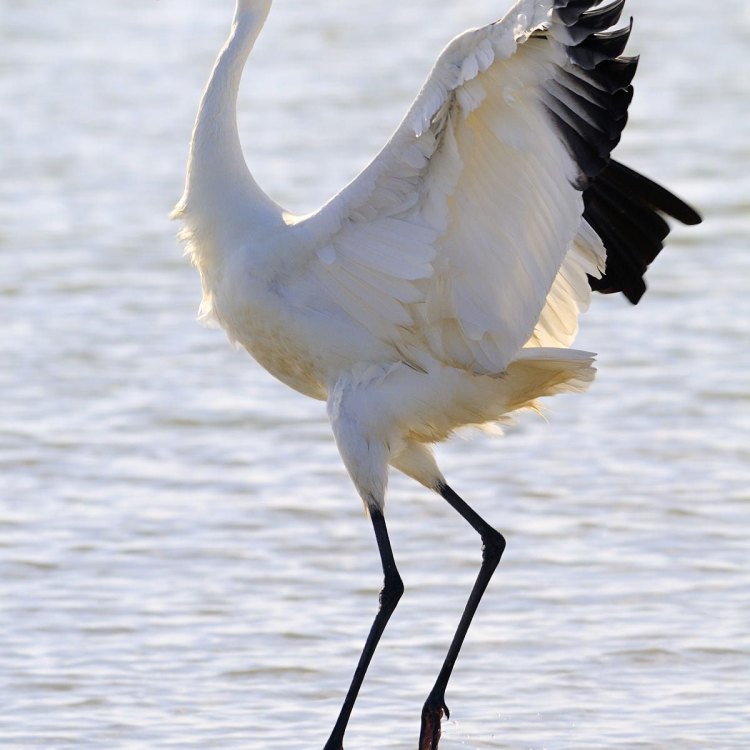
The Majestic Whooping Crane: A Symbol of Conservation and Resilience
Disclaimer: The content provided is for informational purposes only. We cannot guarantee the accuracy of the information on this page 100%. All information provided here may change without prior notice.


